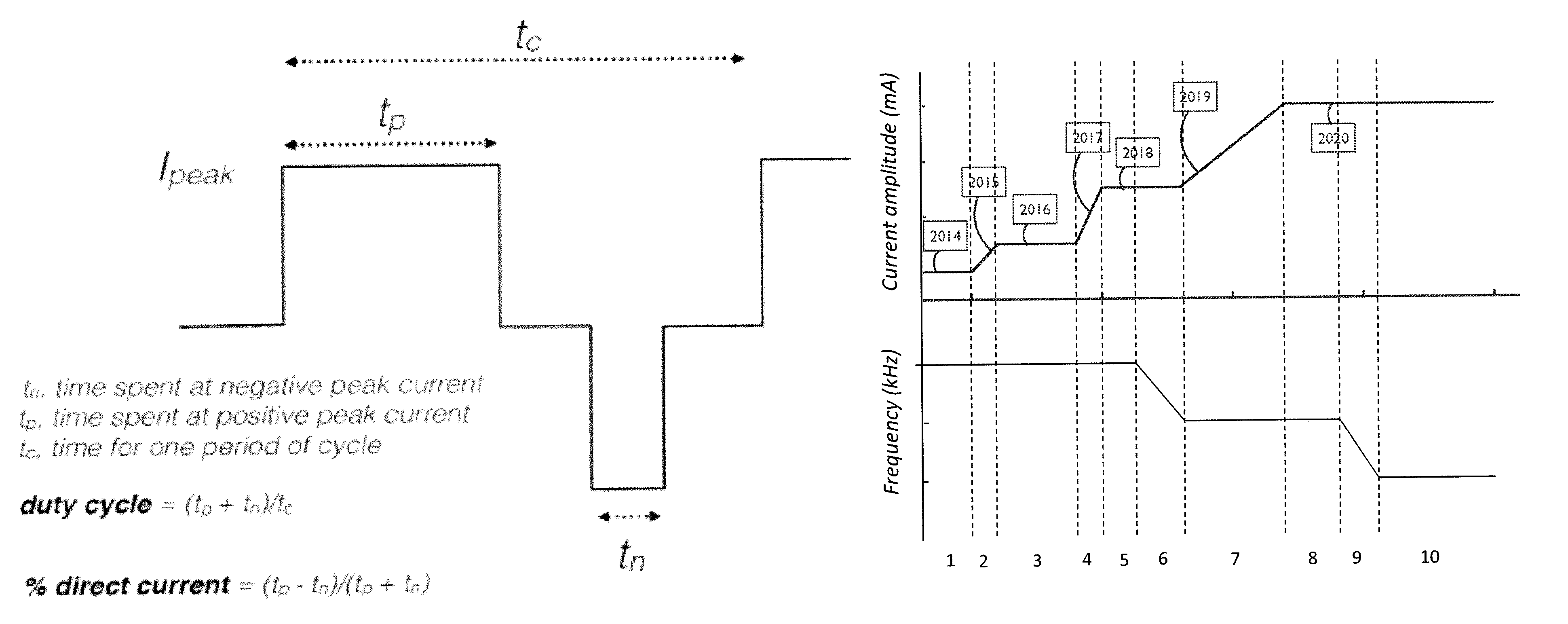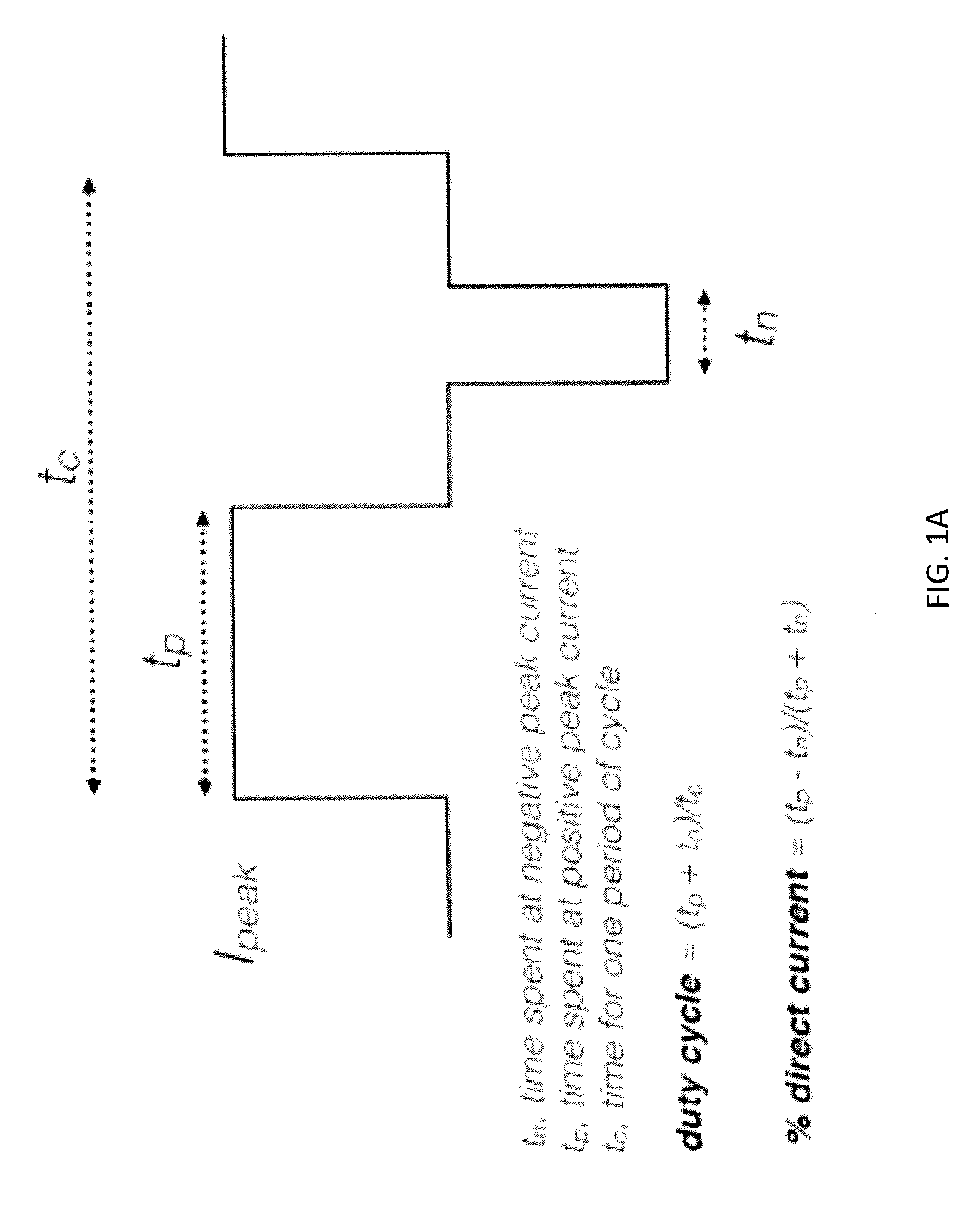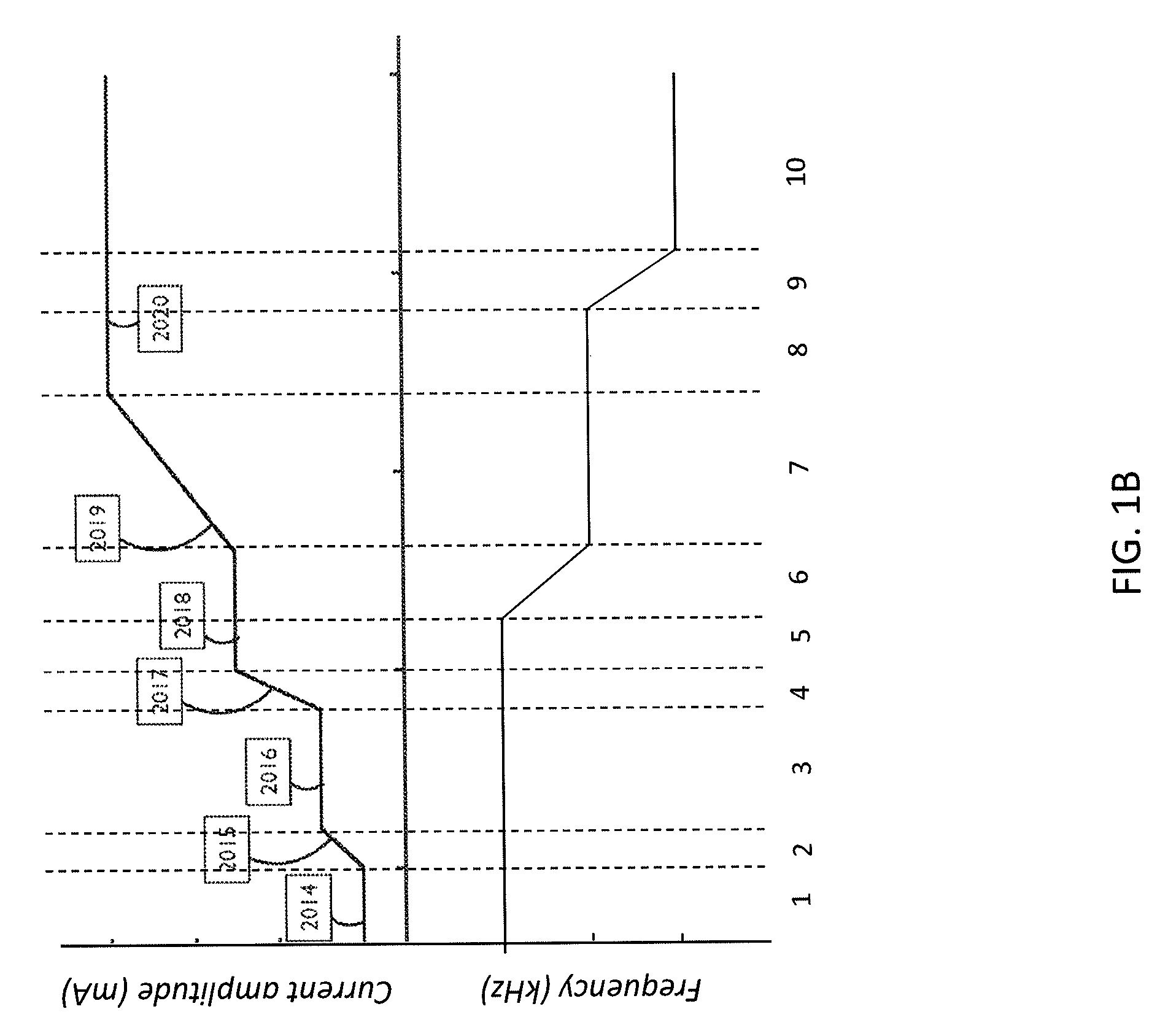Methods and apparatuses for control of a wearable transdermal neurostimulator to apply ensemble waveforms
a transdermal electrical stimulation and ensemble waveform technology, applied in the field of non-invasive neuromodulation, can solve the problems of limited system design and delivery of tes waveforms, available system does not permit the user to modulate a predetermined amount, and the current system and methods of tes are lacking, so as to achieve quick and accurate instructions and optimize communication speed, power usage and efficiency.
- Summary
- Abstract
- Description
- Claims
- Application Information
AI Technical Summary
Benefits of technology
Problems solved by technology
Method used
Image
Examples
examples
[0171]Three additional examples of parameters for ensemble waveforms are described below. In these examples the waveforms may be implemented in the neurostimulation systems described above and illustrated in FIGS. 3A-3Q. These waveforms may be defined as a vector array including the duration and waveform parameters (frequency that the basic waveform unit is repeated, peak current amplitude, percent charge imbalance of the basic waveform unit, percent duty cycle of the basic waveform unit, and, optionally, capacitive discharge parameters and / or amplitude modulation or burst mode parameters). The basic waveform unit may be defined, or may be set by the system, e.g., as biphasic, square pulses having a predetermined or variable period cycle (i.e., by composing waveforms having chirped pulses).
[0172]Example 1 is shown in FIG. 4A, and is another example of a calm ensemble waveform. The table shown in FIG. 4A lists the waveform parameters for each of the component waveforms. In this examp...
PUM
 Login to View More
Login to View More Abstract
Description
Claims
Application Information
 Login to View More
Login to View More - R&D
- Intellectual Property
- Life Sciences
- Materials
- Tech Scout
- Unparalleled Data Quality
- Higher Quality Content
- 60% Fewer Hallucinations
Browse by: Latest US Patents, China's latest patents, Technical Efficacy Thesaurus, Application Domain, Technology Topic, Popular Technical Reports.
© 2025 PatSnap. All rights reserved.Legal|Privacy policy|Modern Slavery Act Transparency Statement|Sitemap|About US| Contact US: help@patsnap.com



